Unearthing a One-of-a-Kind Jurassic Fossil
In a stunning sale at Sotheby’s New York, the only known juvenile Ceratosaurus skeleton ever discovered roared past its pre-sale estimates to hammer for a whopping $30.5 million. This Late Jurassic dinosaur fossil, nicknamed a “unicorn of dinosaurs” for its extreme rarity, was unearthed in 1996 at the famed Bone Cabin Quarry in Wyoming.
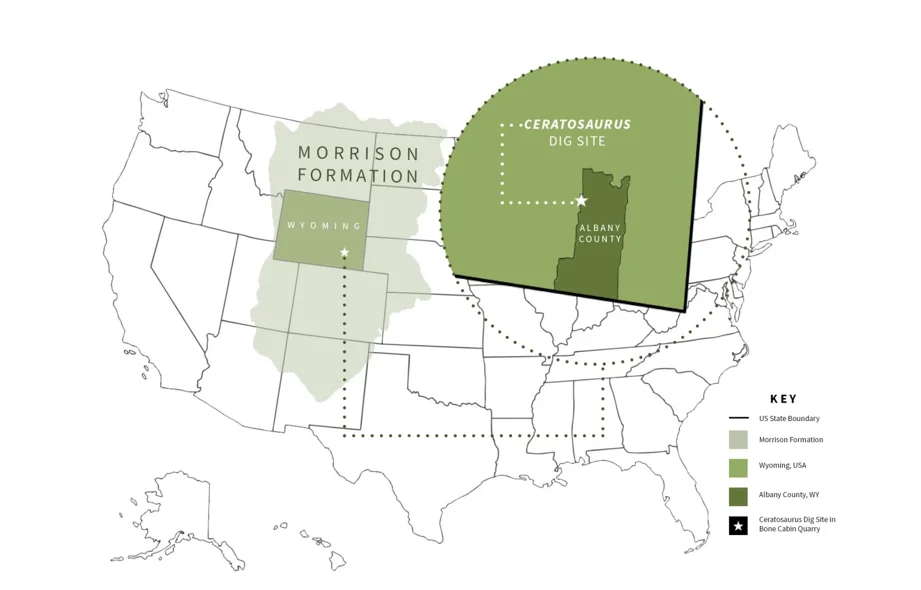
Standing about 6 feet (1.9 m) tall and 10.5 feet (3.2 m) long, the skeleton contains 139 original fossil bones, including a virtually complete skull with dozens of sharp teeth. Paleontologists identified it as a juvenile Ceratosaurus nasicornis based on its delicate bone structure and partially developed features. It is one of only four Ceratosaurus specimens ever found, and the only juvenile among them. This exceptional level of rarity and preservation made the fossil a highly coveted prize even before the auction gavel fell.
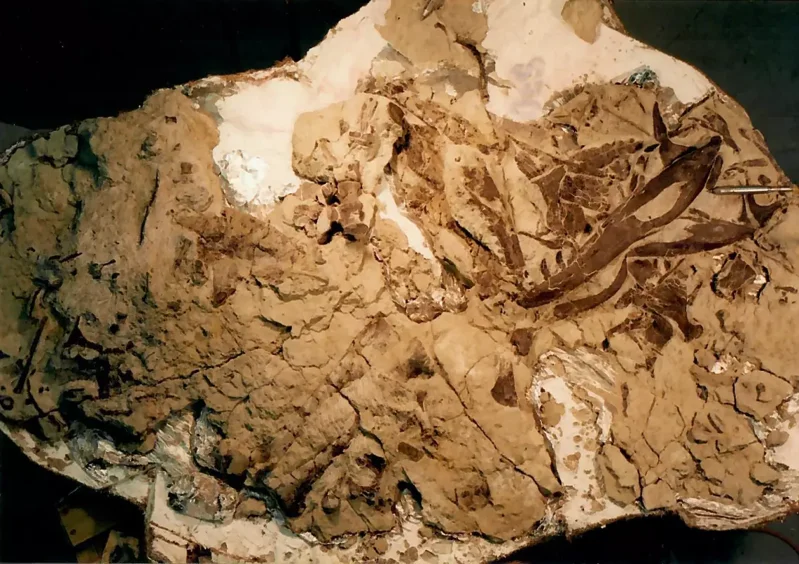
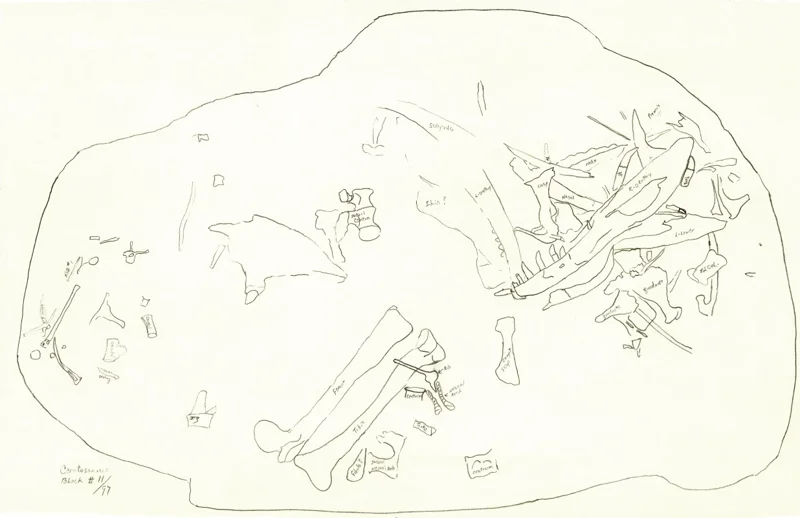
Bone Cabin Quarry, where the dinosaur’s remains were discovered, is itself legendary in paleontology circles. It was the site of huge fossil expeditions by the American Museum of Natural History around 1900, yielding “the greatest find of extinct animals made in a single locality,” according to curator Henry Fairfield Osborn. The quarry’s rocky hills have produced Jurassic giants like Brontosaurus, Allosaurus, and Stegosaurus, so the discovery of a Ceratosaurus, a far rarer predator, caused quite a stir.

The juvenile skeleton spent decades on display (unrestored) at the Museum of Ancient Life in Utah before being painstakingly prepared and mounted for the first time ahead of the Sotheby’s sale. Sotheby’s vice chairman for science and natural history, Cassandra Hatton, lauded the specimen as “a marvel of prehistoric preservation” and “among the very finest dinosaur fossils to ever be offered at auction”, underscoring its significance to both science and collectors.
Meet Ceratosaurus: Horned Predator of the Jurassic
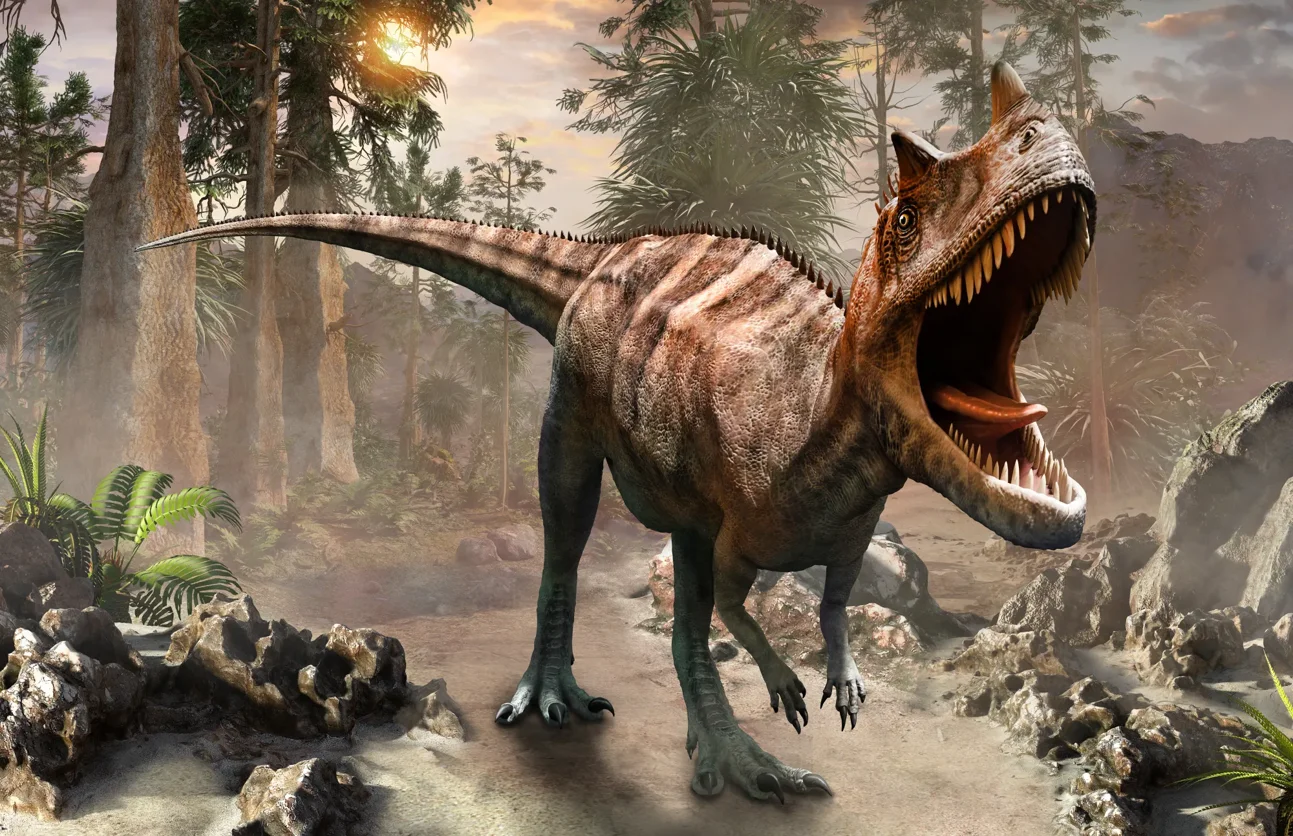
Ceratosaurus, whose name means “horned lizard,” was a carnivorous dinosaur that walked the Earth 154–150 million years ago in the Late Jurassic Period. This bipedal predator shared its environment with giants like Apatosaurus and Stegosaurus during a time when the supercontinent Pangaea was breaking apart. Fossils of Ceratosaurus have been unearthed in North America, Europe, and Africa, though they are exceedingly rare. The dinosaur is easily recognized by the distinct horn on its nose (from which it gets its name), along with prominent blade-like teeth and a row of bony armor plates or protrusions running down its back and tail. In life, an adult Ceratosaurus might have reached around 15–20 feet in length, but this Sotheby’s specimen never got that large, it died young, leaving behind a smaller frame but impeccably preserved bones.
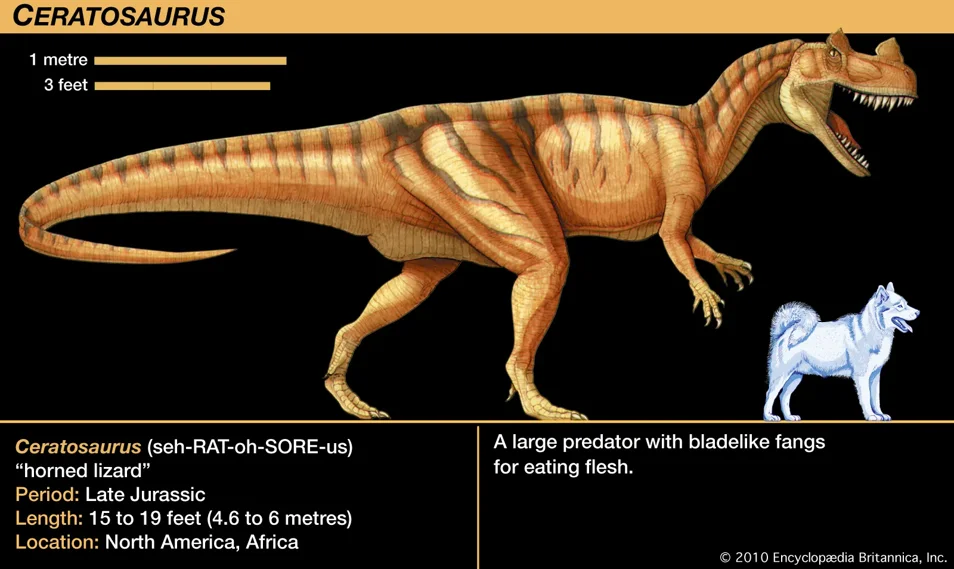
Scientists note that Ceratosaurus was a distant cousin of the later T. rex, though it lived about 100 million years earlier than the famous Tyrannosaurus. The opportunity to study a juvenile Ceratosaurus is especially intriguing to paleontologists, since it can shed light on the growth and development of this species, something impossible to glean from adult fossils alone.
Bidding War at Sotheby’s “Geek Week” Auction
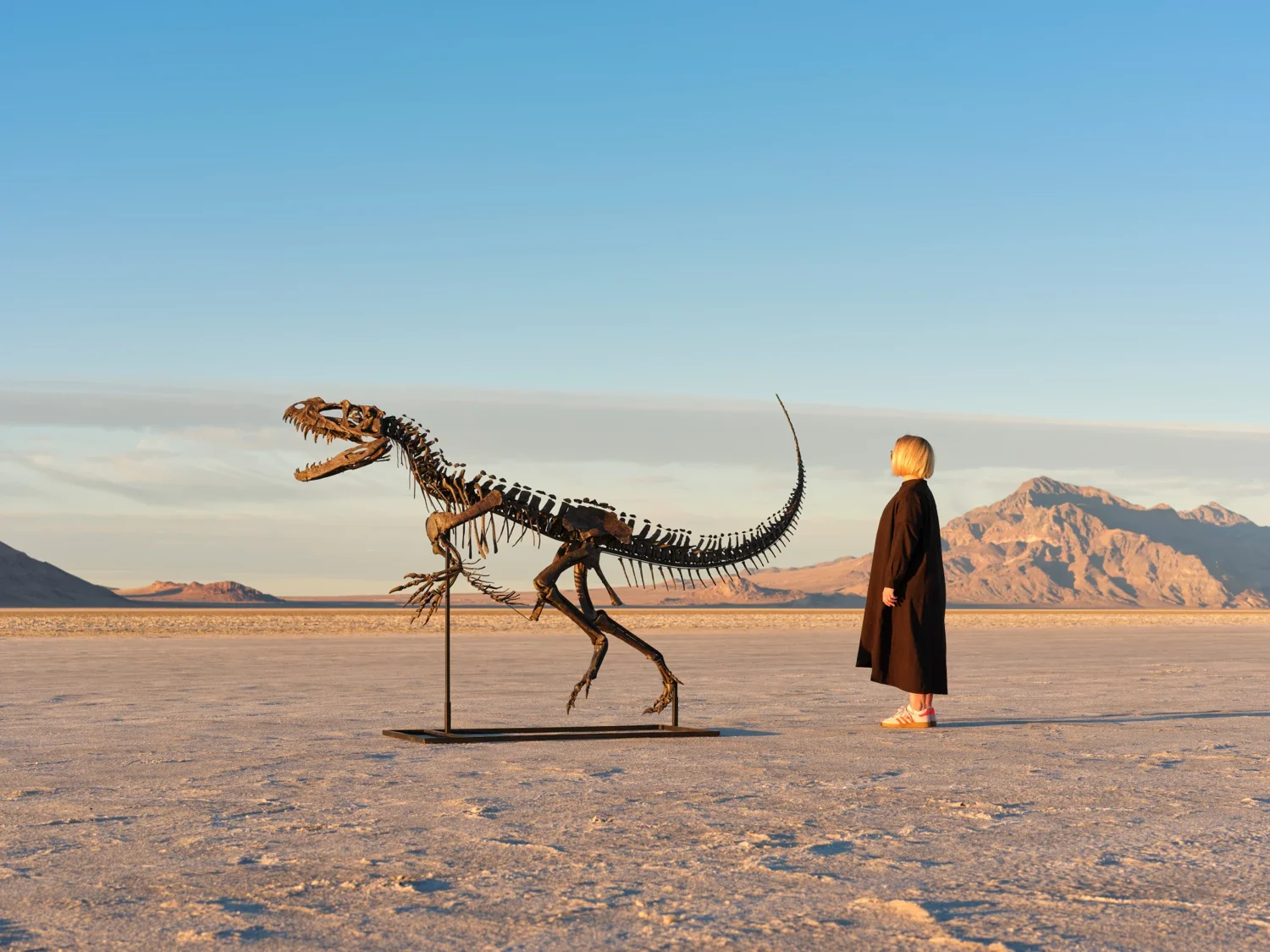
The sale of the Ceratosaurus took place during Sotheby’s annual Natural History auction (dubbed “Geek Week”), an event featuring extraordinary science and nature collectibles from meteorites to fossils. When this lot hit the block on July 16, it ignited a fierce six-minute bidding war among wealthy collectors across the globe. In total, bidders from 37 countries vied for a chance to own the dinosaur. The final price, $30.5 million (fees included), absolutely smashed the pre-sale high estimate of $6 million. In fact, the long-dead Jurassic carnivore ended up outshining even a 54-pound meteorite from Mars that was offered in the same sale; that meteorite, the largest piece of Mars ever found on Earth, sold for “only” $5.3 million. The dinosaur skeleton was clearly the star of the auction, commanding an almost mythical allure for buyers. “It’s a beautiful fossil, rare and important,” Hatton noted, saying she was not surprised it achieved such a lofty price.
This sale is noteworthy not only for the dollar amount, but because auctions of complete dinosaur skeletons are exceedingly rare events. The first time a full dinosaur skeleton was sold at auction was in 1997, when Sotheby’s offered the Tyrannosaurus rex nicknamed “Sue.” Sue’s $8.4 million price tag (paid by Chicago’s Field Museum) was called “staggering” at the time. Fast forward to today, and fossil prices have taken an even more dramatic leap. Last year, Sotheby’s set a world record by selling “Apex,” the most complete Stegosaurus skeleton ever found, for an eye-watering $44.6 million.

Apex’s sale in 2024 unseated the famed T. rex “Stan” (which sold for ~$31.8 million in 2020) as the most expensive fossil skeleton ever auctioned. Now with this juvenile Ceratosaurus fetching $30.5 million, Sotheby’s can claim two of the top three dinosaur sales in history, cementing the auction house’s reputation in the niche market of museum-quality fossils.
From Private Sale to Public Display
Perhaps the most encouraging news for science and the public is what comes after the auction. According to Sotheby’s, the winning buyer, who remains anonymous, intends to loan the Ceratosaurus skeleton to an institution for public exhibition, “as is fitting for a specimen of this rarity and importance”. In other words, this prized dinosaur won’t be locked away in some billionaire’s private collection, but should soon be accessible to researchers and displayed for all to enjoy.
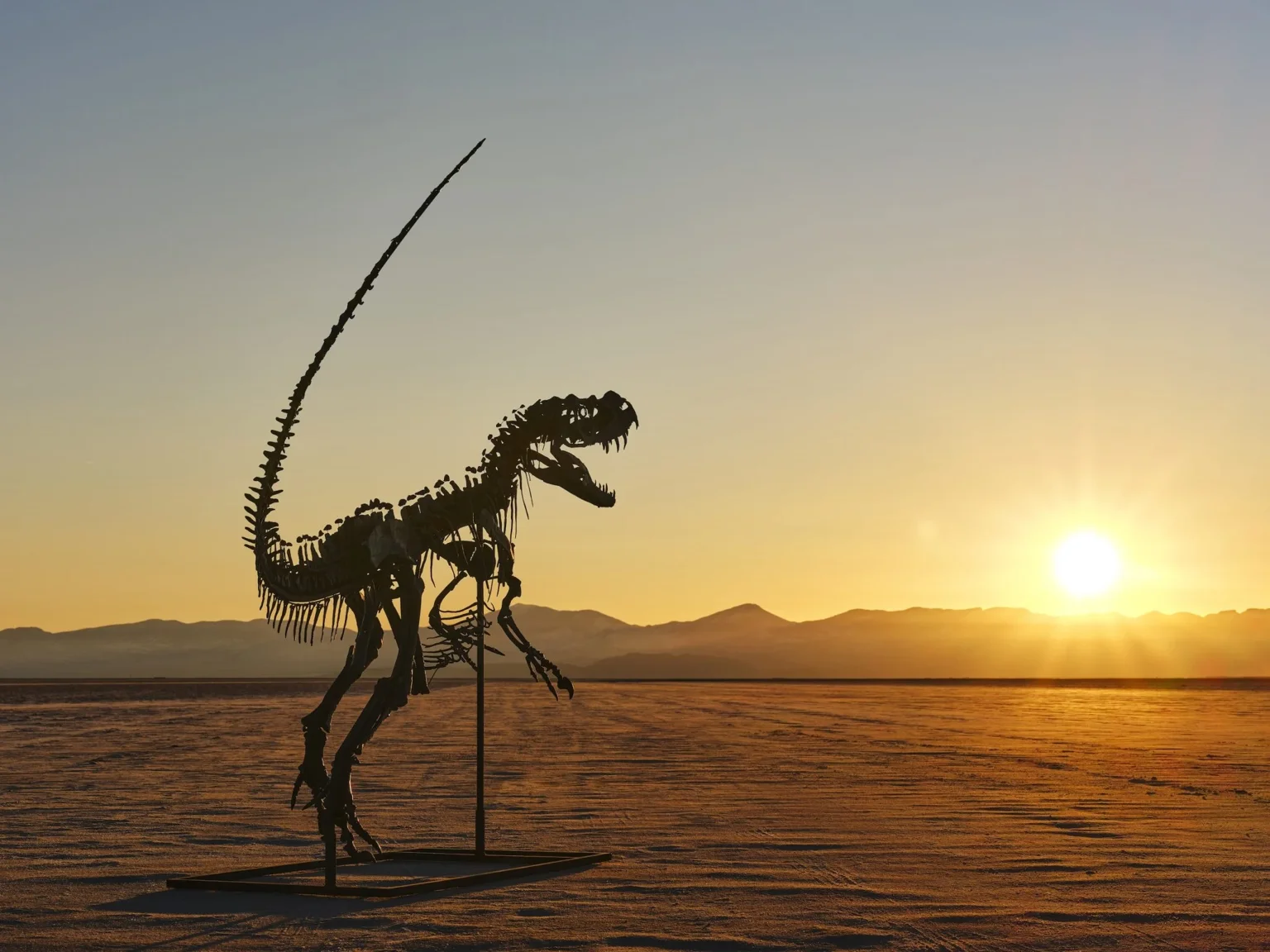
This echoes what happened with the Apex Stegosaurus: its buyer, hedge fund billionaire Ken Griffin, promptly lent “Apex” to the American Museum of Natural History (AMNH) in New York, where it went on long-term public display. Griffin, a noted museum patron, even sponsored a new paleontology fellowship to study Apex, ensuring that scientists could analyze the fossil in depth. The fact that the Ceratosaurus’s new owner likewise plans to collaborate with an institution is a welcome outcome. It helps address paleontologists’ concerns that high-priced fossils might disappear into private hands, “gone, a ghost” to science. Instead, this juvenile Ceratosaurus may soon take its place alongside other dinosaur icons in a museum, where experts and enthusiasts can marvel at it up close.
A Fossil Phenomenon Blending Science and Status
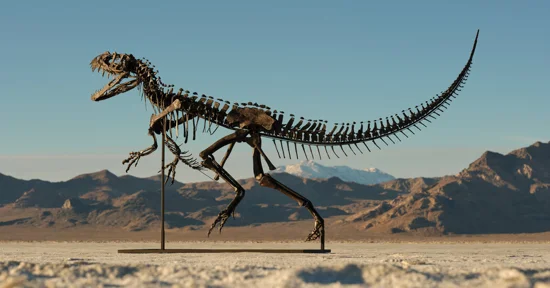
The saga of this record-setting dinosaur sale highlights our enduring fascination with prehistoric life. Dinosaurs have long been superstar attractions, from museum halls to Hollywood films, and now they’ve become the ultimate trophy collectibles for some of the world’s wealthiest enthusiasts. Sotheby’s and other auction houses have increasingly given top-notch fossils pride of place alongside fine art, and the results speak for themselves: dinosaur fever can drive multi-million-dollar sale prices. For the general public, there is a silver lining to this trend. While the sums are sky-high, these fossils often end up in museums thanks to the new owners’ sense of stewardship and prestige. As Cassandra Hatton put it, such sales reflect not just a passion for science, but “a deep-seated curiosity about the forces that have shaped our planet”. In the case of the $30.5 million Ceratosaurus, that curiosity, and a competitive auction, have transformed a prehistoric rarity into a modern-day cultural treasure, soon to be admired by dinosaur lovers of all ages.
Photos: Desert Photos by Matthew Sherman